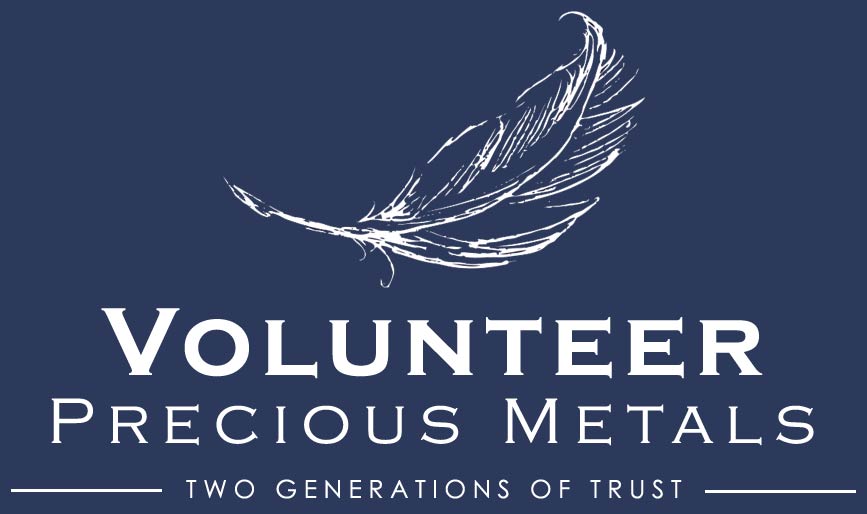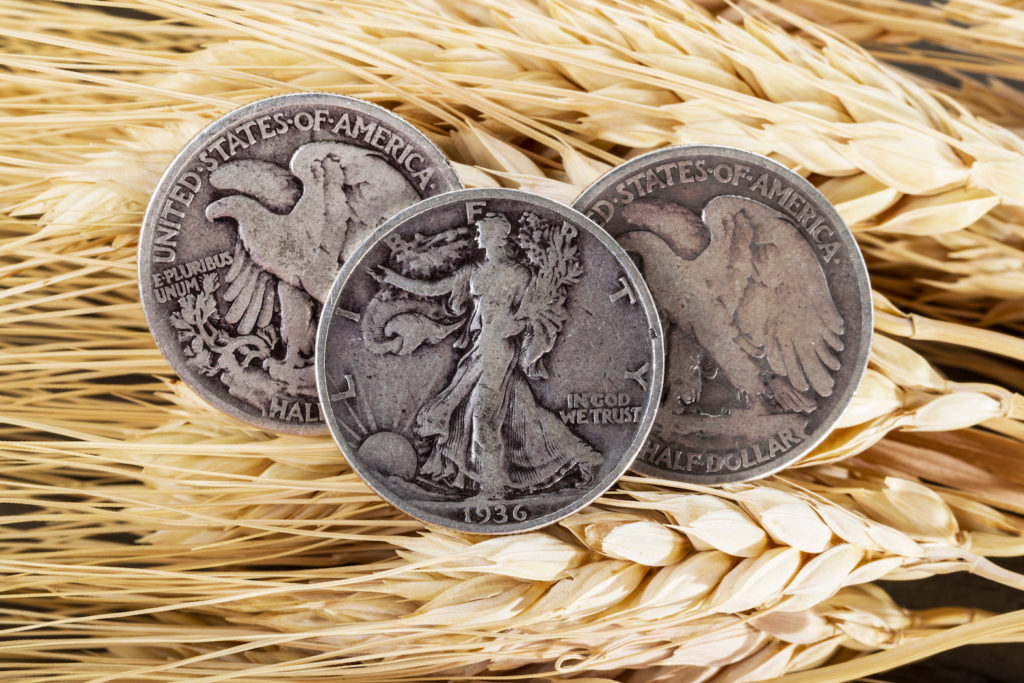Many folks purchase precious metals as a hedge – as financial insurance. And that’s no mistake. Gold and silver – before they are an investment – are the ultimate in asset protection. And when you purchase gold and silver to this end, you buy it and stick it in a safe somewhere. Maybe you swap it and increase your ounces but that’s the most it will move. Mostly, you buy and hold.
Others purchase gold and silver, not just for protection, but also as a store of value with which to barter in a worst-case ‘economic breakdown’ scenario. I think we’ve spoken to 99% of those folks now living in the United States at some point in the past 20 years. Some of y’all call us at least once a week. Maybe you call to make sure our fear-of-potential-social-and-economic-meltdown level is kept at a high nine. Maybe it’s something else.
And if you’re reading this and feel like I’m making light of possibilities, I am. I have an objection to everyone’s (including my) natural tendency to allow fear of potential futures too big a place in our minds. It’s silly how easy it is, also, to look at the other crazies out there and say, “Thank God I’m not like him!” while we’re stringing razor tape around our suburban backyard because we heard that inner-city gangs would be executing anyone foolish enough to throw snap-pops on their driveway this Fourth of July.
Potential futures are just that – potential. They are not certain and hiding behind, “I hope for the best and prepare for the worst,” is often a cop-out so we feel better about our obsession. If you spend all your time preparing for the worst, you’re probably hoping for the worst, too. So be careful. Sure we’d like to see injustices righted. Yes, the wicked are in places of power, but please! Be careful what you wish for. The price of huge social upheaval is always paid in human life.
Now that that’s out, we can continue.
If you’re buying gold and silver to barter, you want to focus not only on liquidity, but also divisibility. When you purchase gold and silver simply as a store of value, you want to buy the largest gold coins possible, because the price you pay per ounce always increases as coins get smaller. This isn’t true with silver.
What is true for both metals – and most things is life – is that new and shiny always costs the most. This means that if you have to have this year’s American Eagles you will get pay more for the ounces you buy. And, even though smaller coins cost more than larger ones, there are some fractional (less than one ounce) gold coins out there that will cost you less than one ounce gold American Eagles. Let’s talk specifics then.
In fractional gold coins you want French 20 Francs (.1867 oz), British Sovereigns (.2354 oz), Austrian 1 Ducats (.1106 oz), German 20 Marks (.2304 oz), or Mexican 5 (.1206 oz), 10 (.2411), 0r 20 (.4823 oz) Pesos. Every now and then there’ll be a great deal on modern issue fractionals, like quarter Krugerrands, but don’t count on it. Foreign (especially European) fractional coins like those listed above will be your best bet for both divisibility and liquidity. They are very well known in the western hemisphere, which is where we live and where these recommendations assume you’ll be staying.
In silver, our stock recommendation of 90% silver coin (0.715 oz per one dolar face value) stands. It is the most divisible, liquid and easily-recognizable form of silver you can buy. (There are fourteen siver dimes to the ounce.) What’s more, it’s the absolute cheapest form of silver right now. Yes, silver rounds and American Eagles are one ounce and make sense now, but when you know the little formula we’re going to give you next, you’ll understand why we say it doesn’t make sense for you to spend the extra money on one ounce options.
So how do you barter? Please understand that what we say next is all theoretical. We, of course, have not had to barter with gold coins, but we do know a few things…
The first is that markets are incredibly efficient – waaaaayyyy more than we understand. This means that just because you – and everyone around you – doesn’t know something today, if they need to learn it tomorrow to survive, they’ll catch on quicker than you can say, “John has a long moustache,” or even, “the chair is against the wall.”
Practically here’s how this works out. In 1980 silver shot to the moon. You couldn’t go to the grocery store and buy anything with silver, but if you threw down three silver dimes on the check-out counter, the clerk could tell you their value. Why? It benefited her to know. It was in her interest to learn something new. And this is in a case when that knowledge wasn’t necessary! If you’re talking about a have-to-know-to-transact-day-to-day-business scenario, folks are going to figure out quick that four quarters minted before 1965 = 0.715oz of silver.
That leads us to B. To figure the value of any gold or silver coin in a barter situation you need to know the weight of metal in the coin (or bar). As mentioned above, some items are obvious weights and state that on their face. But a lot of the inexpensive coins we recommend don’t do this. That’s why we listed their weights next to them. And if you barter with any gold or silver coins, you won’t need to find the value they contain in dollars. If you’re bartering with gold and silver for your groceries, dollars will be dead. Read that again – if you are buying gold and silver to barter with them, dollar denominated coins are not a necessity because if you have to barter with gold and silver, the dollar will be irrelevant to your transactions.
You will hold out four quarters and ask if 0.715 oz of silver is enough for the Wolverine hide you’re trying to buy for your grandmother’s birthday. If they say, “No,” you add four dimes and say, “What about a whole ounce?”
It’s that simple.
And the scenario is the same with gold but for pricier items. It stands to reason that silver will be the work-horse of your daily transactions, as it has been throughout human history.
So there you have it – if you think you’ll ever need to barter gold and silver, buy small, divisible coins, much more silver than gold, and learn the content of metal in the coins you own.



My brother recommended I might like this website. He was entirely right. This post actually made my day. You can not imagine simply how much time I had spent for this information! Thanks!
Saved as a favorite, I really like your web site!
Thank you extremely good advice
Thank you for this information! I wondered why fractional coins and bars were so popular. I have been buying 1 oz round and now see I need to diversify! Thank you so much!!!
Only a fool would not read this site. Cuts it to the bone. Straight, honest. I almost went wrong direction. You saved me big time.
For barter I’d have silver coins in a range of weights, down to 1 – 1.5 grams. When the paper trading manipulation of silver fails (which it will), the value will rocket, and small amounts of silver are likely to have significant purchasing power (for example, if Clif High’s prediction of $600/oz silver comes true, 1g will be worth around $20, though this will be in the failing fiat). When that happens people won’t accept being 1 or 1/2 gram short in a transaction. I don’t think the country of origin will stop people from transacting with foreign numismatic coins, so long as the coin is recognisable or it’s weight and silver content can be verified. Historically, silver coins were tiny and mostly under 3 grams in weight (Roman silver denarius, Anglo Saxon sceatta and Medieval pennies, for example). If it’s true that gold has maintained its value through the ages in what it will purchase (‘a fine suit of clothes’), it’s likely that silver will also resettle at its historical value in what it will purchase, and in relation to gold.
If you are paying in real money, aka gold and silver, you are simply buying with precious metals as the form of payment. It isn’t barter. Barter is the direct exchange of goods or services for other goods and services. Gold and silver are money.
Gold and silver are not safe money for payment in the midst of a crisis or breakdown in law and order. In such situations revealing that you have hard money is likely to greatly increase your risk and you will become a topic of local gossip. In a crisis you should generally pay with whatever other folks are using to pay with. Under some circumstances that common means of payment may be gold or silver, but it is usually something else. If I didn’t have adequate amounts of whatever is being used for payment I would exchange gold and silver with a trusted trading partner to obtain the preferred local currency, and then make public transactions in that currency. Yes ,of course that may slightly increase my transaction costs. I will gladly take that hit to avoid having unsavory fellows discussing my gold over beers at the local watering hole. Also in my experience if you show up to make a purchase with something other than the preferred local currency you will almost always pay more for the purchase than if you exchange money with a market sensitive money changer.
DO NOT ever suggest to a corrupt official that you can pay in gold. Do to the power imbalance involved in the transaction, if the officials request gold you must pretend that will be a difficult request to comply with even if you have gold on hand. Immediate agreement to pay in gold is likely to result in you getting chucked in the nearest prison cell until they have extracted every single bit of value from you and your contacts, and then they will kill you and dump your body in the trash.
My counsel is shaped by over 20 years living and ministering as missionary with in a place without the rule of law. I have often been that trusted, quiet trading partner for local individuals who needed to exchange small amounts of gold or silver for the local currency. Like VPM, Christian ethics shape my business endeavors; as a result the word circulates quietly that “The missionary will exchange that for you at a favorable price. He doesn’t gossip and has good contacts.”